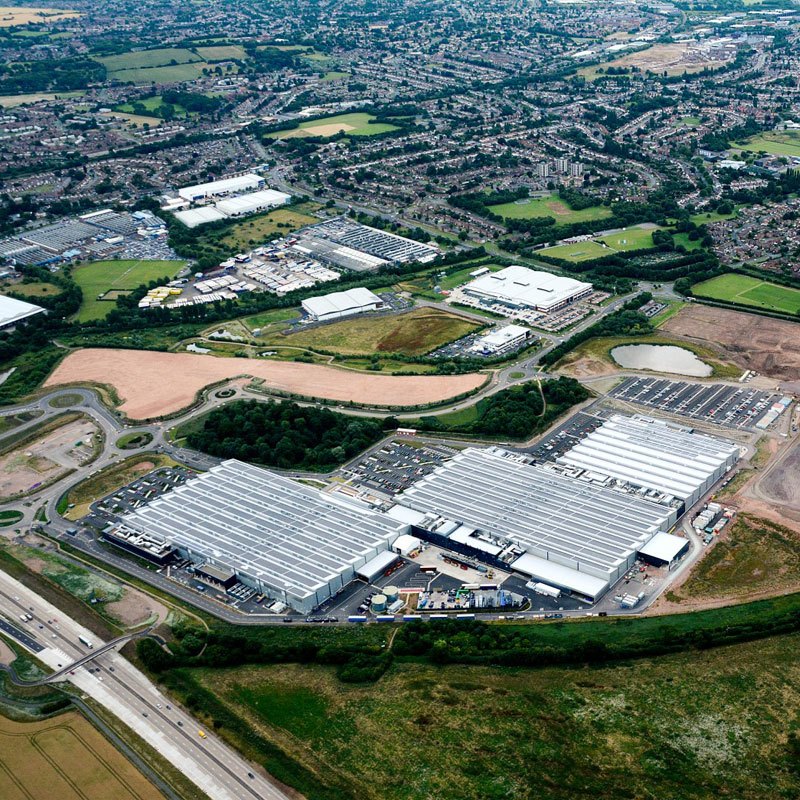Jaguar Land Rover, Advanced Earthworks

of 70,600m3 of soil and topsoil off site; movement of 147,000m3 of material from cut to fill operations; the movement of stockpiles already on site; the construction of a 4,580m3 underground drainage attenuation tank; archaeological trenching, and; temporary site drainage.
The site was located directly adjacent a live JLR production facility operating two shifts a day throughout, with hundreds of staff vehicle movements at shift change times. Construction vehicle movements on and off site were constrained by JLR peak traffic times, local planning authority vehicle movement timeframes and highways peak traffic times. The removal of 70,600m3 of material from site in an overall programme duration of 21 weeks involved up to 260 wagon loads per day operating within the aforementioned tight constraints.
Material was processed and laid under a strict compaction and testing regime with fills being placed in 250mm layers up to a depth of 4 metres.
A type 1 stone protection layer was laid to the top of the stabilised surface to complete the works which involved the import of 35,000 tonnes of quarried stone.